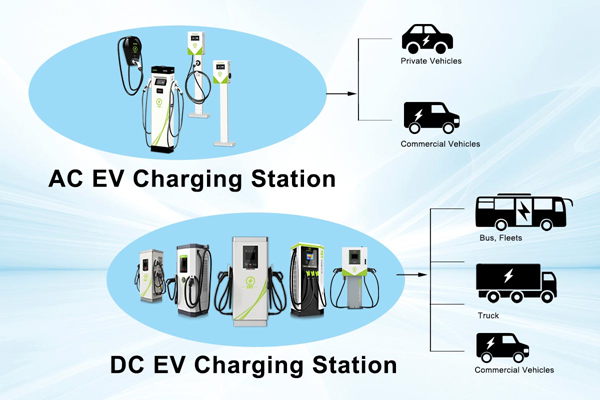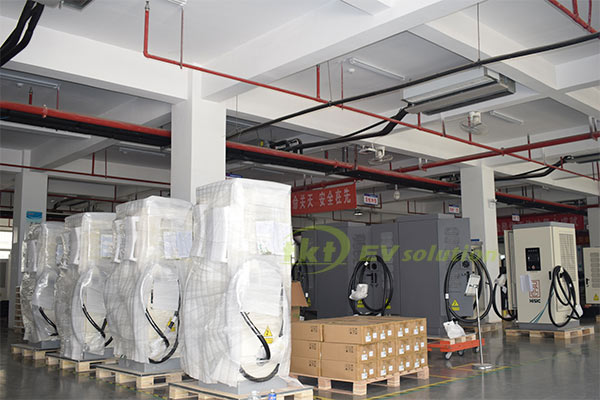In the field of EV charging, charging posts play an important role. However, do you understand the different types of charging piles and their characteristics? In this article, we will take you through the common types of charging piles so that you can choose the most suitable charging solution for your EV.

01. According to charging speed
Slow-speed charging station (AC charging station): A slow-speed charging station is one of the most common charging devices for homes, parking lots, and other places. It uses alternating current (AC) charging, where alternating current (AC) from the power supply network flows into the vehicle in a controlled manner through the charging post and charging gun, but is not converted, and only an AC/DC converter (i.e., on-board charger) mounted on the vehicle converts it to direct current (DC) and uses it to charge the battery. Therefore, AC charging piles do not need to be equipped with conversion electronics, charging speed is relatively slow, and the output power of 3.5kW, 7kW, 15kW, etc., is generally used for daily charging and long-time parking charging.
Fast charging station (DC charging station): A fast charging station is a kind of high-power DC charging equipment, which can charge EVs in a short time. DC charging station is usually installed with corresponding high-power electronic equipment to convert electric energy from AC to DC, which can directly charge the battery of EVs, and at the same time, the output voltage and current can be adjusted in a wide range. So it can realize fast charging, which is suitable for charging in urgent need or long-distance travel. TKT’s DC charging piles are generally available in sizes of 30kW, 60kW, 80kW, 120kW, 150kW, 180kW, 200kW, etc., and are usually installed at gas stations, highway service areas, etc.
02. Divided according to the place of installation:
Home charging station: Home charging stations are charging devices that are specially installed in residential or home parking spaces. They are generally connected to the home power grid and provide slow-speed charging service, which is convenient for users to charge at home.
Public charging stations: public charging stations are charging devices installed in public places, commercial areas, parking lots, and other areas for shared use by multiple users. They generally provide a variety of charging speeds and charging ports for different types of EVs.

03. Divided according to installation conditions:
Vertical electric charging stations: do not need to be installed against the wall, more suitable for outdoor parking spaces or neighborhood parking spaces, some will be installed in the carport. Since the installation outdoors will experience wind and rain, so needs to have better insulation and lightning conditions, and its protection level needs to reach IP54.
Wall-mounted charging station: it must be fixed by the wall, occupies little space, is generally applicable to indoor and underground parking spaces, and its protection level can reach IP32.
What factors do we need to consider when choosing a charging pile?
1. Charging demand: Determines the daily driving mileage, charging frequency, and charging time window. If you need to charge frequently or are pressed for time, then it is recommended to choose a charging port with a fast charging function.
2. Charging power: The charging power of the charging post determines the charging speed, so you need to choose the appropriate charging power according to your EV model and battery capacity. Meanwhile, larger-capacity batteries usually require higher power to provide fast charging.
3. Charging connector: Different brands and models of EVs may use different types of charging connectors, so you need to make sure that the charging port you choose is compatible with your EV and can provide the correct charging connector.
4. Safety and quality: It is important to choose a charging post with high safety and quality assurance. Make sure the charging post meets relevant safety standards and certifications and has safety features such as lightning protection, overcurrent protection, and temperature monitoring.
5. Charging management features: Some charging posts offer charging management and intelligent features, such as remote monitoring, charging billing, charging reservations, etc. These features will make it more convenient to use and can be one of the factors to consider.
In summary, choosing a charging post that suits your needs is key. TKT EV Solution, as an electric charging service provider, is committed to providing diversified, safe, and reliable smart charging facilities to meet different needs and make traveling more convenient!


